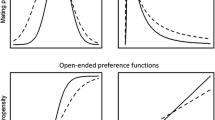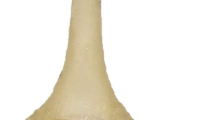Abstract
During a study ofDrosophila mating behavior we observed unexpected changes in performance under ostensibly identical experimental conditions. We related the behavior during the 17 days of the experiment to changes in ambient humidity and barometric pressure. Humidity had no significant effect, but reduced barometric pressure was found to be associated with reduced mating activity (R 2=0.29,P<0.025), accounting for close to 30% of the variation in total number of matings.
Similar content being viewed by others
References
Grossfield, J. (1978). Non-sexual behavior ofDrosophila. In Ashburner, M., and Wright, T. R. F. (eds.),The Genetics and Biology of Drosophila,Vol. 2b, Academic Press, London.
Manning, A. (1961). The effects of artificial selection for mating speed inDrosophila melanogaster.Anim. Behav. 9:82–92.
Author information
Authors and Affiliations
Additional information
This research was supported by NIH Grant GM30638-02 to Therese Markow.
Rights and permissions
About this article
Cite this article
Ankney, P.F. A note on barometric pressure and behavior inDrosophila pseudoobscura . Behav Genet 14, 315–317 (1984). https://doi.org/10.1007/BF01065549
Received:
Accepted:
Issue Date:
DOI: https://doi.org/10.1007/BF01065549




